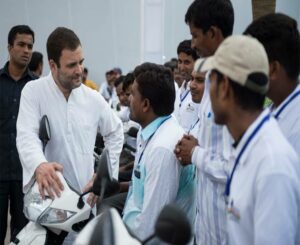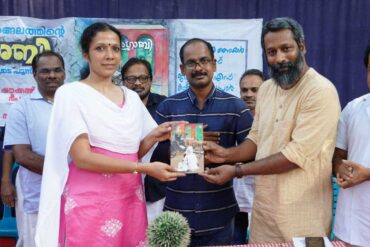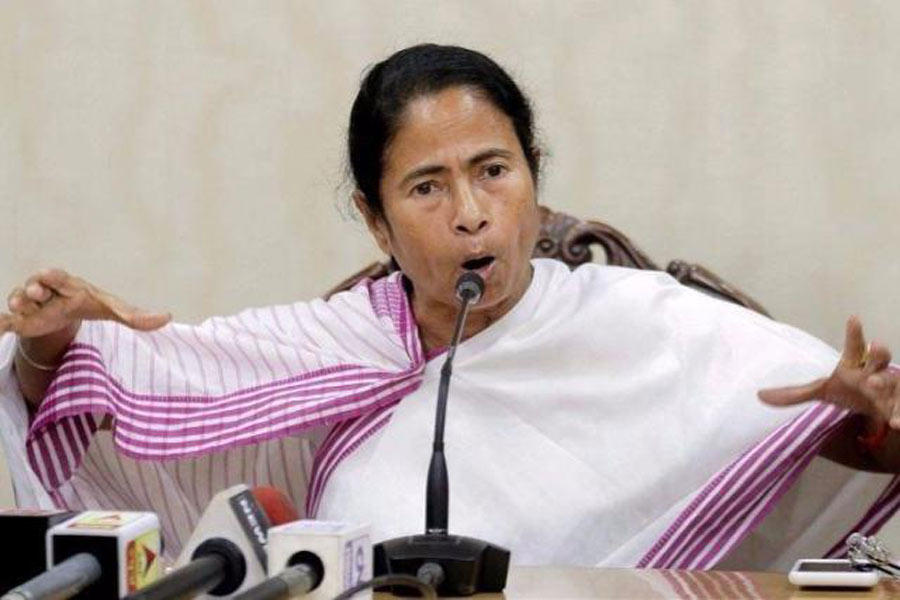We have had in Narendra Modi a Prime Minister who oozes charm and is more a gentleman than officer—only when he hits the outbound button, from Indian shores. We have a Chief Minister in Pinarayi Vijayan who sheds his preferred white shirt and mundu to don elegant black suits—only when he hits the continent or other parts of the world. True, our Prime Minister does not spare his own country a daily offensive from the arsenal that is his wardrobe, sometimes with as many as four dress-change routines. Many lesser leaders in the BJP have followed suit, pun unintended.

The Kerala Chief Minister, like many of his predecessors, has not been as lucky, shackled by the magnetic sheen of white. The story has been no different in the case of other parties with even the BJP sticking to this ‘uniform’ in Kerala. As we move from the North to the South, the talons of white as a dress code grips almost all political parties, right down to the rank and file. Thus, khadi has given way to a lifestyle habit that goes beyond Congress. Even those who have remained ambiguous about the position they accord to the Mahatma as a nationalist swear by the power of white.
Clearly, there is something in the pure-as-driven-snow attributes of white as a colour that compels an overwhelming percentage of politicians in the country to repose faith in it. But that something is a highly localised phenomenon that cuts no swathe across the seven seas. And the fading power of white in the rest of the world is so unequivocal that out leaders are in a tearing hurry to get out of their whites the moment they leave the local shores.
If India has succeeded in imparting the benefits of yoga to the rest of the world, no such success can be claimed in selling white as a way of life in politics. No such attempt was made when we called the shots at South Asian Association for Regional Cooperation (SAARC). For a country that managed to push Kabaddi at Asian Games, there is no record of India pushing for delegates to be robed in whites at Association of South East Asian Nations (ASEAN). And, by extension, no such luck at G-12 or even the United Nations (UN). Why, not even at the scores of venues for bilateral talks.
Evidently, the politically-correct colour of white is only for domestic consumption. Not unlike the turning tracks we prepare at home, but not for visiting players. Imagine a dress protocol for visiting political heads of state for public functions in India. Visualise US President Donald Trump or for that matter Russian President Vladimir Putin clad in white; unlikely scenario, even as a holiday dress code.
 Therefore, the pertinent question that needs to be asked with increasing frequency and less shoulder-shrugging is, does white as a politically-correct colour connect with the masses as much as it did in the past? Not so much the youth if the recent efforts of Rahul Gandhi to dress casually in jeans and T-shirt while addressing a bunch of young students at Stella Maris College in Chennai can be considered a yardstick. Given India’s young demographic profile, no one can question such a yearning.
Therefore, the pertinent question that needs to be asked with increasing frequency and less shoulder-shrugging is, does white as a politically-correct colour connect with the masses as much as it did in the past? Not so much the youth if the recent efforts of Rahul Gandhi to dress casually in jeans and T-shirt while addressing a bunch of young students at Stella Maris College in Chennai can be considered a yardstick. Given India’s young demographic profile, no one can question such a yearning.
So, is it the old guard that is standing in the way of a revisit of what is the accepted colour code for politicians in India? I did raise this question, albeit casually, with some senior Congressmen as recently as a month ago at a function in Wayanad. The response ranged from dismissive, through mildly curious to “I wish I could.” It is a mixed bag. And the unasked question is who will bell the cat, or the many fat cats who are the self-declared custodians of the grand old party of India.
In an interaction with the Pune media in November 2009, Rashtriya Swayamsevak Sangh (RSS) Supremo Mohan Bhagwat had said they were ready for change, subject to a consensus in opinion. While fielding a question about a perceived disconnect between the RSS and the youth of India then, he had said: “We are ready for change, but it is for the workers to decide and there has to be unanimity in their decision. This issue had come up for discussion at the Pratinidhi Sabha three years ago but there was no consensus on the subject. Now, the topic will again be discussed at the Sabha scheduled next year, and will be taken forward provided there is unanimity of view among the workers.”
 If the RSS could go on to replace the Khakhi short pants with long trousers, it is indeed moot why some of the major political parties in the country cannot revisit its compulsive engagement with an all-white ensemble. Perhaps the Congress, which started the preoccupation with white in the first place, can show the way for other politicians.
If the RSS could go on to replace the Khakhi short pants with long trousers, it is indeed moot why some of the major political parties in the country cannot revisit its compulsive engagement with an all-white ensemble. Perhaps the Congress, which started the preoccupation with white in the first place, can show the way for other politicians.
Yes, it’s a bit difficult to imagine some of the older politicians turn out in casual tees and denim/corduroys. There could of course be exceptions and Kerala could well show the way. After all, a pair of jeans is working class attire in most parts of the world. Comrades, with their recent penchant to look at Europe to pick up a trick or two in governance, should not be averse to an outfit change. It could well answer some questions about their continued relevance in the new world order.







